Metra is looking to build a rail yard to increase service on the Union Pacific Northwest line
Woodstock, Illinois, where the movie "Groundhog Day" was filmed, hopes that more trains will attract more visitors.
6:37 PM CDT on March 25, 2024
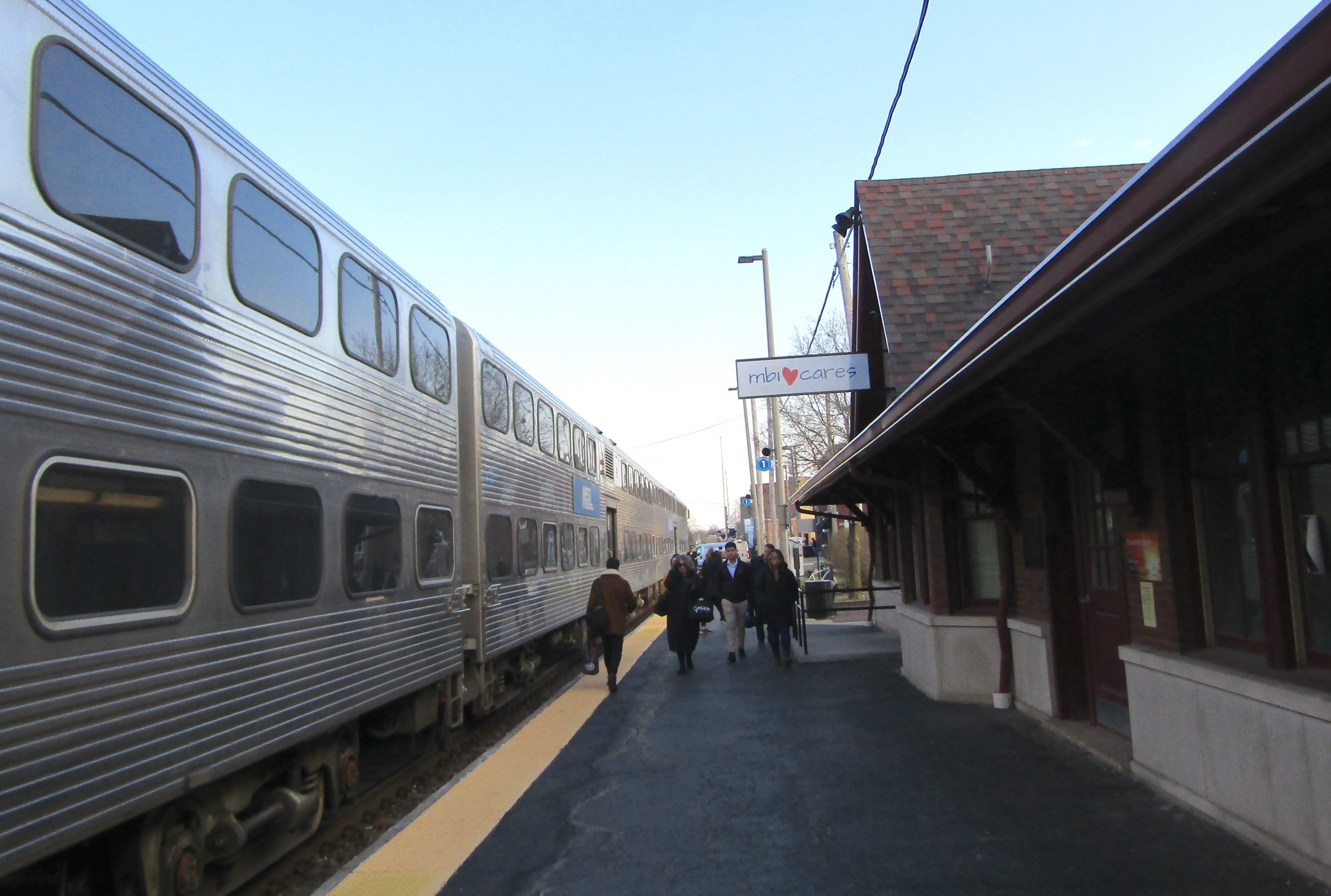
Passengers arrive at Woodstock via Metra, looking south. Photo: Igor Studenkov

Metra is looking into building a new rail yard in far northwest suburban Woodstock in order to improve maintenance and increase capacity on the Union Pacific Northwest line.
Having a new rail yard would allow Metra to run as many as 21 extra trains a day – though Metra spokesperson Michael Gillis emphasized that the railroad isn’t committed to that or any other specific number. While Metra hasn’t secured the funding to actually build the rail yard, it has gotten funding for initial engineering and design. Last Thursday, March 21, the railroad held an open house at the Woodstock Opera House to show residents preliminary plans for two potential project sights and give them a chance to weigh in.
As you might expect in a town where the hit 1993 movie "Groundhog Day" was shot, attendees showed up bright-eyed and bushy-tailed to get info about the rail yard plans. From what I heard during the event, most of them were largely comfortable with the proposal. The concerns they had were more about the specifics. One attendee, for example, suggested changes to reduce the impact on wetlands.
The City of Woodstock and McHenry County officials in attendance said they supported the yard. The increased capacity would give local residents more travel options to Chicago and other suburbs, and bring in more visitors. In Woodstock there's been a concerted effort to promote the city as more than just the place where Bill Murray's cynical weatherman character Phil Connors had to relive the same day until he became a more optimistic, altruistic person.
The officials also said they support a Metra service increase from a development perspective. They believe the county’s seven stations are ripe for denser, mixed-use transit-orientated development, similar to what’s already happened further down the UP-NW line in communities like Palatine, Arlington Heights, Des Plaines and Park Ridge. They just think the stations need more service to make such developments viable.
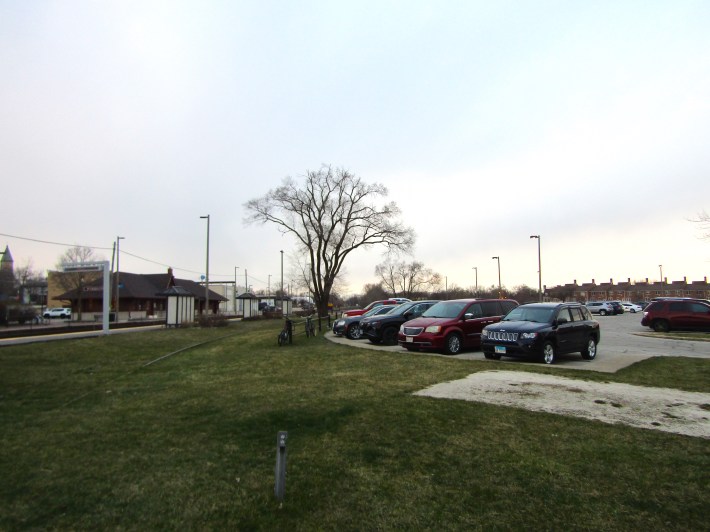
The need for the project
The UP-NW Line is usually the second-busiest line in the system after the BNSF line, and it's the longest in terms of track miles. "It is triple-tracked in most of Cook County, and becomes double-tracked just east of the Barrington station. At Crystal Lake, a single-track branch splits off toward the city of McHenry. While most of the line runs seven days a week, the McHenry branch is currently rush-hour only, with trains heading towards Chicago in the morning and returning to McHenry in the evening.
The line currently has rail yards in Barrington and Crystal Lake, but they're relatively small and, as Metra notes, there simply isn’t much room to expand. McHenry has a rail yard as well.
Most UP-NW trains don’t go past downtown Crystal Lake. While non-rush-hour weekday headways on most of the line tend to be one to two hours, at Woodstock and Harvard station passengers have to wait as long as two to three hours if they miss a train. On Saturdays, the average headways are one hour for most of the line and two hours for Harvard and Woodstock.
On Sundays, Harvard and Woodstock passengers sometimes have to wait as long as four hours between some midday and evening trains, versus two hours on the rest of the line. If you miss your train, it's an extremely frustrating situation, not unlike Phil Connors being forced every day to comment on whether a large ground squirrel sees its shadow.
Asked whether the disparity in schedules has to do with equipment availability or service patterns, Gillis said it was a combination of both.
In contrast, Metra's Union Pacific North line's Waukegan yard is larger than UP-NW’s two suburban yards combined. The railroad was able to basically halve the weekday headways on the Chicago to Winnetka section of the UP-N from roughly once an hour to once every half an hour. Say what one will about more frequent trains benefitting some of the ritziest suburbs in Chicagoland, riders have responded positively to this increase.
What Metra is proposing
According to Metra materials presented at the meeting, the railroad looked at the area around the section of the line between Barrington and Harvard, and eventually narrowed it down to two sites at the northwest end of Woodstock, north of the tracks. Site 1 is located east of Lamb Road, stretching until around where Carlisle Drive begins. Site 2 is located west of Lamb Road. Metra is looking at two possible footprints – one that juts out, thumb-like, and one that’s closer to the tracks.
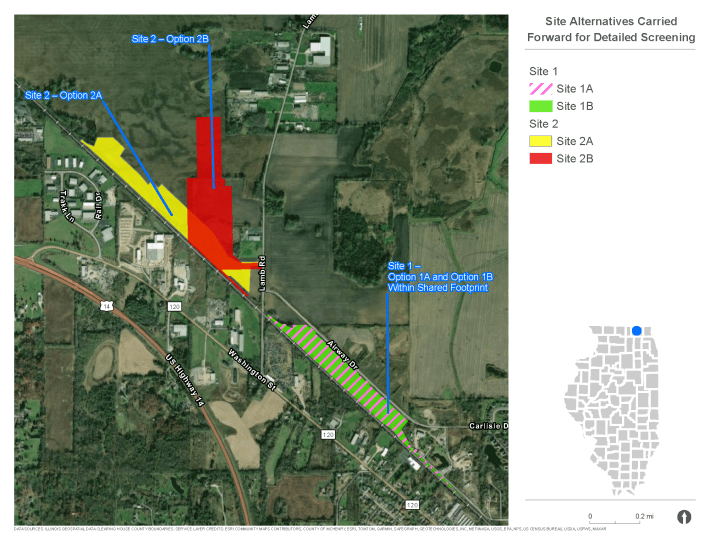
Either way, the new rail yard will feature an enclosed space where trains can be repaired. Metra touched on the fact that it would move idling, diesel-spewing trains out of residential areas and take them someplace more rural. The railroad also stated that "the project would generate operational cost savings, bring an estimated 100 new jobs to the area, and attract additional ridership for Metra."
Gillis confirmed that, until construction funding is secured, Metra can’t speak to when the rail yard would be built, and when service improvements might take place. He said that he expects the new rail yard to benefit the entire line, not just the McHenry County portion.
One of the recurring complaints Streetsblog has heard from McHenry County officials over past decade or so was that, even though the county pays the same Regional Transportation Authority tax as the other collar counties within the RTA service areas, it gets the least for its money.
McHenry County Director of Transportation Joe Korpalski noted the scheduling differences, and he welcomed the project because it would bring more trains to the county. "If you move the rail yard, you have more service."
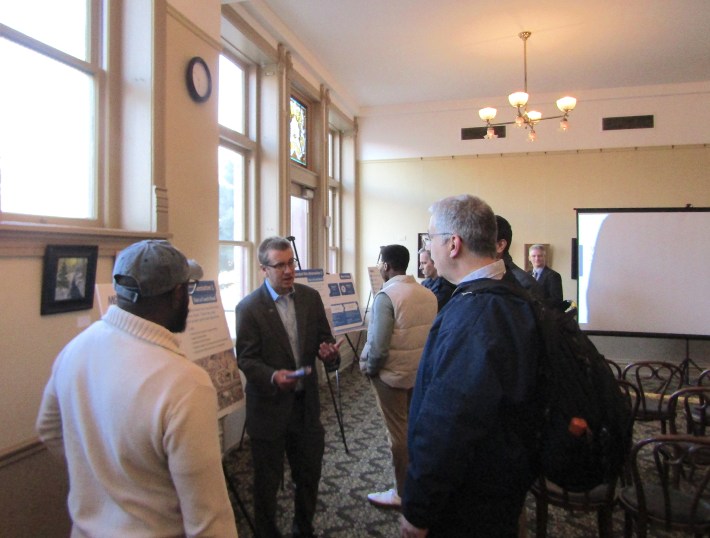
Korpalski added that county supports more TODs around the stations, specifically mentioning successful developments Palatine and Arlington Heights as examples. They were among several towns along the UP-NW that did major redevelopment around their downtown stations in late 1990s and early 2000s, bringing in denser mixed-use buildings with retail spaces.
Woodstock doesn’t seem like the most obvious place for a TOD. Its historic downtown is right across the street from the station. City manager Roscoe Stelford told Streetsblog that they are looking at the area east of the tracks, which has a large parking lot.
Kelli Wegener is one of the two McHenry county commissioners who represents District 5. Although her district doesn’t include either Crystal Lake or Woodstock (but does include the city of McHenry) she said she supports the project because she, too, would like to see more Metra service in McHenry County to bring people to see the growing downtowns and other destinations. "And also, the Bears – if they build the new stadium [next to Arlington Park station], Metra would be huge."
Stelford said that Woodstock is “extremely excited about this project and having it move forward. "When completed, it will significantly improve public transit services for our residents and visitors," he added. "[More frequent service] will give people more opportunities to use transit and move through this region."
Stelford noted that around ten years ago the city launched the "Real Woodstock" campaign, encouraging Chicagoans and other suburbanites to visit the city. Billboards went up at UP-NW stations as far southeast as Chicago's Jefferson Park neighborhood. While the pandemic hurt those efforts, Stelford said that bringing in more visitors is still a goal. Improving Metra service frequency, he argued, is a major part of that. "Every time you can increase access, you can really see the benefits," Stelford said.
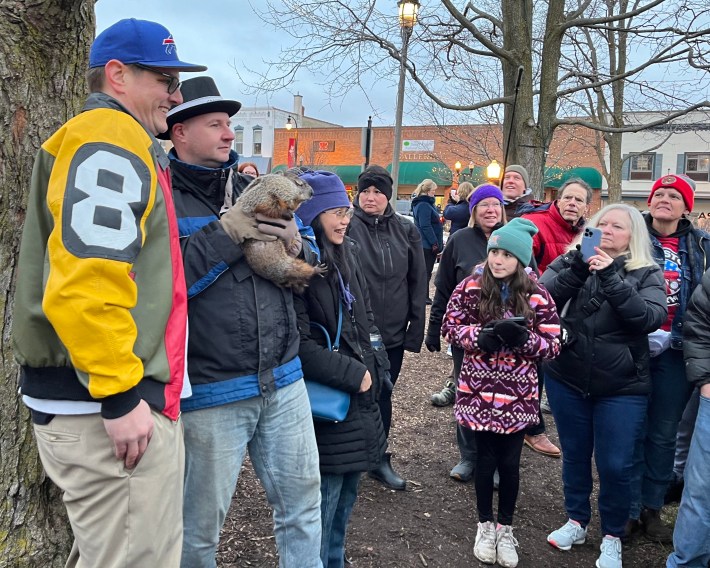
Indeed, similar to how Woodstock Willie not seeing his shadow on February 2 indicates a shorter winter, more Metra service to Woodstock may predict a brighter future for the city.

Did you appreciate this post? Please consider making a tax-deductible donation to help Streetsblog Chicago keep publishing through 2025. Thank you.
Stay in touch
Sign up for our free newsletter
More from Streetsblog Chicago
Johnson appoints one West Side pastor for CTA board, then nominates another West Side pastor to RTA board
Supporters argue that, despite his lack of transit expertise, Ira Acree’s social justice experience and political connections could be an asset for the RTA board.
Today’s Headlines for Thursday, April 26
The de-facto ban on riverwalk biking is back. What should we do about it?
In the short term, new signage is needed to designate legal areas for cycling on the path. In the long term CDOT should build the proposed Wacker Drive protected bike lane.


